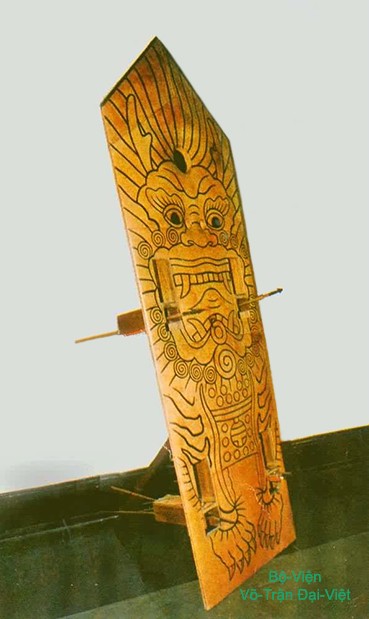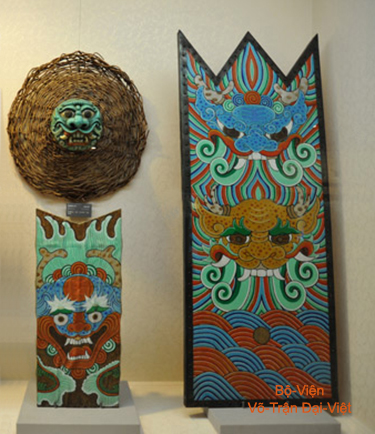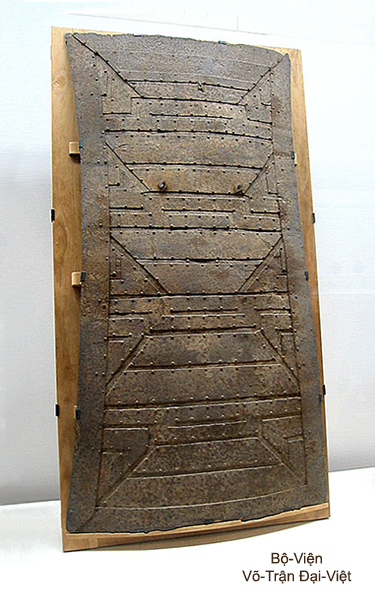II.
THE MEDIEVAL WEAPONS
5 - The Cover Arms
The Shields and Pavois
Thuẫn & Khiễn
盾 - 搴
The Shields « Thuẫn » (盾) and « Khiên » (搴) are used to protecting oneself against arrows and sharpened weapons on the battle fields. There is a Cover-Arm having his presence in the whole world since ancinent times and carrying a Spiritual symbolism filled with deepth and subtlety.
The weapon which could thwart the Shields « Thuẫn », is the Pertuisane « Mâu » (矛) ; that why we have expressions like « Tư-Tưởng Mâu-Thuẫn » ("Pertuisane-Shields Thinks" = Contradictory Thinks) , « Luật Mâu-Thuẫn » ("Pertuisane-Shield Law" = Law of Contraries), etc. for designing the contraries chooses, in opposition.
The Shields « Thuẫn » (盾) in the Đại-Việt Traditional Martial Arts of Battle Field of Đại-Việt include two main categories including Bài (Rondache) and Khiên (Pavise) :
A - The Category of Rondache called « Thuẫn-Bài » ( 盾 牌 ) ;
B - The Category of Pavise called « Thuẫn-Khiên » ( 盾 搴 ).
A -The Category of Rondache called « Thuẫn-Bài » ( 盾 搴 ) or « Bàng-Bài » ( 旁 牌 ) or the « Shield on the side ».
They are made of Wicker and Rattan, in the roundness shape, holding Two Handles for bearing on one's forearm, and a Belt for bearing them on one's shoulders or on one's back. These Shields are from Two Under-Categories :
A1 - The Under-Category of Plaited Rattan Rondaches called « Đằng-Bài » (藤 牌).
This Under-Category of Rattan-Rondache is particularly used for On Foot Fighting
.
In the country of Đại-Việt it exists Two Classes of Rattan-Rondache « Đằng-Bài » :
α) The Class of Rondache « Đằng-Bài » ( 藤 牌 ) supplied with only One Handle for holding it ;
β) The Class of Rondache « Đằng-Bài » (藤 牌) supplied with Two Handles for bearing it on one's forearm and for holding it in hand.
A1α. The Class of Rondache « Đằng-Bài » ( 藤 牌) supplied with only One Handle :
That is there the Class of Wicker & Rattan Rondache not well knovn in the whole country but it exists only in the Centre Đại-Việt.
The medieval battelfields real-life experiences induce the universal Criterion of Average Dimension for Rondaches equal to 50cm +/- 1cm of Diameter.
Therefore, this Class of Wicker & Rattan Rondache supplied only One Handle is divided into Three Kinds :
1 - The Kind of Rondache « Đằng-Bài » with Size Inferior of the Average :
Rondache « Đằng-Bài » ( 藤 牌 ) from Centre Đại-Việt : |
Rondache « Đằng-Bài » ( 藤 牌 ) du Centre Đại-Việt : |
2 - The Kind of Rondache « Đằng-Bài » with Average Size :
Rondache « Đằng-Bài » ( 藤 牌 ) du Centre Đại-Việt : |
Rondache « Đằng-Bài » ( 藤 牌 ) du Centre Đại-Việt : |
3 - The Kind of Rondache « Đằng-Bài » with Size Above the Average :
Rondache « Đằng-Bài » ( 藤 牌 ) du Centre Đại-Việt : |
Rondache « Đằng-Bài » ( 藤 牌 ) du Centre Đại-Việt : |
A1β. The Class of Rondache « Đằng-Bài » ( 藤 牌) supplied with Two Handles :
This Class of Rondache Đằng-Bà isupplied with Two Handles is the one most well known.
Martial-Student of Vietnamese Traditional Martial Arts need to be able to know distinguishing the difference between Rattan Shield structure from Đại-Việt.during Posterior-LÊ Dynasty & Lords TRỊNH in Northern Region r(said Exterior Country) and the Rattan Shield structure from Việt-Nam of NGUYỄN Dynasty in Southern Region (said Interior Country) Period.
in addition, he needs to know making the distinguishing one part between the two kinds of Rattan & Wicker Shield from Vietnameses in LÊ & TRỊNH Dynasties Period and those from NGUYỄN Dynasty previously quoted and the other part the distinguishing with Rattan & Wicker Shield from China :
- The Wicker & Rattan from LÊ-TRỊNH Dynasties (1545~1787) Period :
- The Wicker & Rattan from NGUYỄN Dynasty (1802~1945) Period :
- On the material plan, the distinguishing sign of Rattan Rondache « Đằng-Bài » ( 藤 牌 ) from Đại-Việt that any country in the world owns is as following : In addition of Two Handles (Énarmes)
it exists still one Transversal Grip.
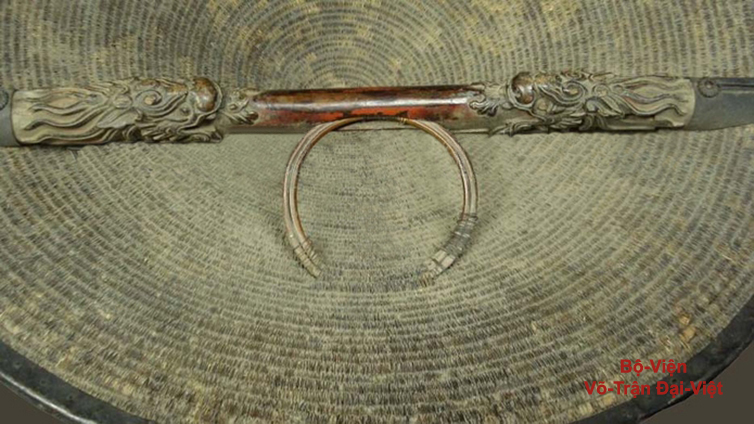
The distinguishing sign of the Đại-Việt Rattan Shield « Đằng-Bài » ( 藤 牌 ) :
In addition of the Two Handles for bearing it on one's forearm, there is
an carved Dragon-Son
(the 7th Son of the Dragon) Nhai-Xải 捱 眥 Headed Grip.
- LÊ-TRỊNH Dynasties ( 1545-1787) Period -
(Photo Credit : ashokaarts.com)
- On the historic plan, this transversal Grip attached to one of Two Handles was an invention of Ancients from Đại-Việt. Well later,in the Enperor Càn-Long Dynasty (1735~1736) of QING period, during their uprising for « Over-throwing the QING and Restoring the MING », the men of Thiên-Địa-Hội (天地會 Tiandihui) had gone to Việt-Nam. They had knew this Rattan Shield Model « Đại-Việt Đằng-Bài » ( 大 越 藤 牌 ) from Posterior-LÊ Dynasty & Lords TRỊNH (said Exterior Country) having Two Handles and a transversal Grip (Cf. Photo above) and they had handed down it in China.
So, the men in the autoproclaimed State « Tai Ping Tian-Guo » (大 平 天 國 ) (that Westerners called them "Tai-Ping Boxers" ) had inspired themselves also this Đại-Việt Rattan Rondache ( 大 越 藤 牌 ) in order to create a new category of Rattan Shield in 19th century to wage war as below :
- The Wicker & Rattan from QING Dynasty (1644~1912) Period :
Rattan Rondache « Đằng-Bài » ( 藤 牌 ) from China, |
Rattan Rondache « Đằng-Bài » ( 藤 牌 ) from China, |
In the Books like « Trương-Hiệp Trạng-Nguyên » (張 協 狀 元) at the SONG Dynasty (960 - 1279) Period, then Võ-Bí-Chi Wu Bei Zhi 武備志 from Mao Nguyên Nghi 茅 元 仪 (1594-1640) writen in 240 Volumes, 10.405 Pages at the MING Dynasty (1368~1644) and until in the Book « Kiên Hồ Tập » (肩 乎 集) at the QiNG Dynasty Period, there is no way meant mention of this Rondache having Two Handles and a transversal Grip but only those having Two Handles :
Rattan Rondache « Đằng-Bài » ( 藤 牌 ) from China,
|
Rattan Rondache « Đằng-Bài » ( 藤 牌 )
|
Rattan Rondache « Đằng-Bài » ( 藤 牌 ) from MING Period |
Rattan Rondache « Đằng-Bài » ( 藤 牌 ) from MING Period |
Rattan Rondache « Đằng-Bài » ( 藤 牌 ) from China. |
Large Rattan Rondache « Đằng-Bài » ( 藤 牌 ) from China. |
Rattan Rondache « Đằng-Bài » (藤 牌) from China
|
Rattan Rondache « Đằng-Bài » (藤 牌) from China
|
Rattan Rondache « Đằng-Bài » (藤 牌) from Western Tibet, |
Rattan Rondache « Đằng-Bài » (藤 牌) from Western Tibet |
A2 - The Under-Category of the Wooden Shields called « Mộc-Bài » ( 木 牌 ) that means the « Wooden Rondaches » :
These Wooden Rondaches « Mộc-Bài » (木 牌) often called succinctly by "Mộc" (Wood), are frequently covered with Boiled Leather and particularly in use in the Cavalry as well as in the lnfantry.
Wooden Rondache « Mộc-Bài » (木 牌) used in the Infantry. |
But over all thiese Wooden Rondaches covered with Boiled Leather are used in the Infantry for arranging warriors in battle order :
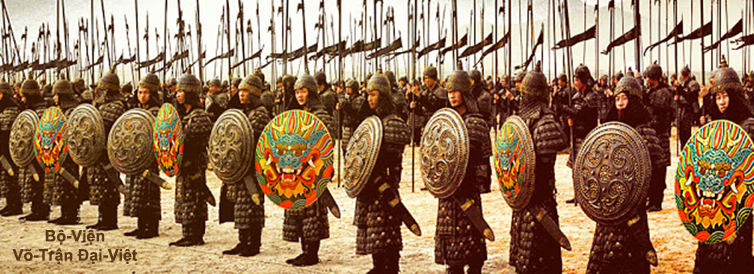
The Wooden Rondache « Mộc-Bài » (木 牌) supplied with Two Grips from TANG Dynasty (漢朝 209 BC ~ 220 AD) Period
is still used in nowadays in the scenes of Pitched Battles throughout the movie.
However, this
«Wooden Rondache decorated with repoussé Leather » is replaced
by the « Moulded and painted Plastic Rondache ».
(Photo Credit : Dragon's Armory)
The Model from the Under-Category of Wooden Rondache « Mộc-Bài » (木 牌) covered with distinguishing Lacquered Buffalo Hide of Đại-Việt from Posterior-LÊ Dynasty (1428-1789) Period had bequeathed to us his influence on very numerous tangible objets on Vietnamese Lands, in this instance that are Round Concave Shaped Shields (Concave Rondaches) on highlands of the centre and the northern regions.
It's truthly regrettable that this cultural heritage did not benefited from a careful and serious administrative preservation ; that why these Đại-Việt Rondaches were sold out to foreign countries via high plateaux of Việt-Nam under the names as « Shields from Việt-Laos Border Regions » or well « Shields from Southern Laos Regions », ...etc.
Wooden Rondache « Mộc-Bài » (木 牌)
from Đại-Việt, |
Wooden Rondache « Mộc-Bài » (木 牌)
from Đại-Việt, |
Wooden Rondache « Mộc-Bài » (木 牌)
from Đại-Việt, |
Wooden Rondache « Mộc-Bài » (木 牌)
from Đại-Việt, |
Wooden Rondache « Mộc-Bài » (木 牌)
from Đại-Việt, |
Wooden Rondache « Mộc-Bài » (木 牌)
from Đại-Việt, |
Wooden Rondache « Mộc-Bài » (木 牌)
from Đại-Việt, |
Wooden Rondache « Mộc-Bài » (木 牌)
from Đại-Việt, |
Wooden Rondache « Mộc-Bài » (木 牌)
from Đại-Việt, |
Wooden Rondache « Mộc-Bài » (木 牌)
from Đại-Việt, |
Wooden Rondache « Mộc-Bài » (木 牌)
from Đại-Việt, |
Wooden Rondache « Mộc-Bài » (木 牌)
from Đại-Việt, |
Wooden Rondache « Mộc-Bài » (木 牌)
from Đại-Việt, |
Wooden Rondache « Mộc-Bài » (木 牌)
from Đại-Việt, |
It exists in Việt-Nam 54 Ethnics Groups with so much linguistic and cultural diversites and yet in nowadays, we still find Shields in the identical design from a same model. We can so say without any exageration that these Wooden Rondaches « Mộc-Bài » (木 牌) quoted previously are precisely the Enblem of Đại-Việt Nation Unity in the construction and the protection of Kingdom.
B - The Category of Pavise called « Thuẫn-Khiên » ( 盾 搴 )
They are made of Wood (lacquered or inlayed with Turtle Scales, or well covered with Buffalo leather), or still of Metal. These Shields are from Four Classes :
B1 - The Class of Pavise in the Roundness Shape :
This Class of Pavise was reserved to the use in Infantry and in Cavalry ; it owns Two Handles for bearing on one's forearm, and a Belt for bearing them on one's shoulders or on one's back when it's about the Cavalry.
Pavise « Thuẫn-Khiên » (盾 搴) in the Roundness shape |
Pavise « Thuẫn-Khiên » (盾 搴) in the Roundness shape |
Pavise « Thuẫn-Khiên » (盾 搴) in the Roundness shape
|
Pavise « Thuẫn-Khiên » (盾 搴) in the Roundness shape
|
|
|
|
|
|
|
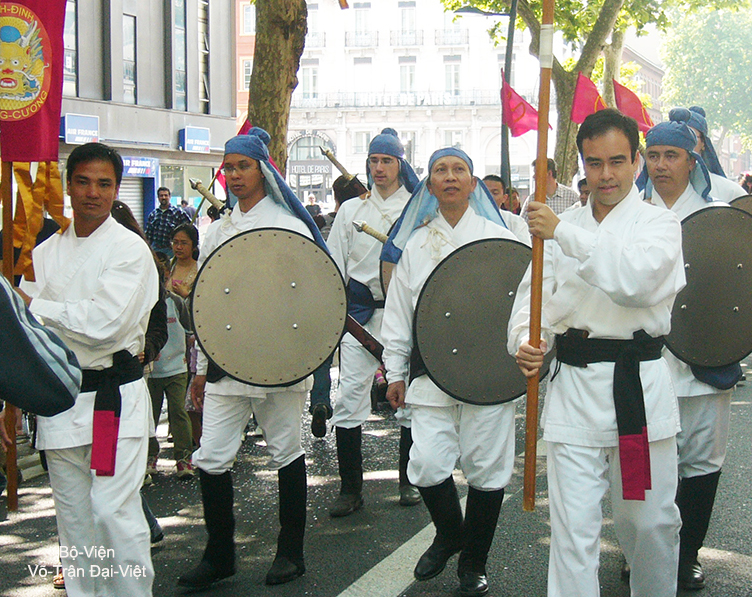
Stream of Pavise-Shields « Thuẫn-Khiên » (盾 搴) from Võ-Trận Đại-Việt School System
at Toulouse - Haute-Garonne (France)..
during
the « Cultural Week of Hà-Nội » in the year 2007
organized by Toulouse City Council and Việt-Nam UNESCO
(Photo Credit : Bình-Định Sa-Liong-Cương)
B2 - The Class of Pavise in the Ovale Shape :
That is the kind of distinguishing Pavise from Đại-Việt in the TRẦN Dynasty (1226-1400) Period : It is The Pavise Holding Two Handles in the Shield Back Side for bearing on one's forearm, and a Belt for bearing them on one's shoulders or on one's back. This Pavise in tyhe Ovale Shape is specially in use for Cavalry
Đại-Việt Wooden Pavise « Mộc-Khiên » ( 木 搴) (Photo Credit : Nguyễn-Ngọc Phương-Đông)
|
Buffalo Leather Covered Wooden Pavois « Khiên » (搴)
|
Đại-Việt Wooden Oval Shaped Pavise « Mộc-Khiên » ( 木 搴)
|
Đại-Việt Wooden Pavise « Mộc-Khiên » ( 木 搴) (Photo Credit : National Museum of Việt-Nam)
|
Pavois de Bois « Mộc-Khiên » (木 搴) du Japon, de Forme Ovale et dont la Face Recto est décorée du |
Le maniement du Pavois de Bois « Mộc-Khiên » (木 搴) |
B3 - The Class of Pavois in the Oblong Shape :
That is about the Class of Shield very in use in South-Eastern Asia, and it holds only a Single Handle for bearing it.
However, this Class of Pavise in the Oblong shape from Đại-Việt owns a distinguishing point which is in addition of a Great Transversal Handle fixed in the Heart of the Back Side, it has a Little Handle situated on the Chief of Pavise with many most unusual utilities.
This Oblong shaped Pavois, is often reserved for Foot-Soldiers in order to stop opposite armies overwhelming in their attack. By consequent, Warrior using this kind of Oblong shaped Pavois need to own solid Postures techiques in order to wage war with efficiency. And then this kind of Pavise is more difficult to use than other Shields because the Warrior risk to injure oneslf his shins with his own Oblong Pavise whom the wielding - we must well say it - is hjigher than other Shields and Rondaches.
Wooden Pavois « Thuẫn-Khiên » (盾 搴) from Đại-Việt |
Wooden Pavois « Thuẫn-Khiên » (盾 搴) from Đại-Việt |
Wooden Pavois « Thuẫn-Khiên » (盾 搴) from Đại-Việt, |
Wooden Pavois « Thuẫn-Khiên » (盾 搴) from Đại-Việt. |
B4 - The Class of Pavise in the polygonal shape called « Lăng-Khiên » ( 稜 搴) or the « Pavíse having Several Angles ».
This kind of Shield Polygonal Pavise includes numerous models and it is divided into Two Under-Classes :
α) The Under-Class of Polygonal Pavise « Lăng-Khiên » ( 稜 搴) reserved for One Warrior ;
β) The Under-Class of Polygonal Pavise « Lăng-Khiên » ( 稜 搴) reserved for Several Warriors.
B4α - The Under-Class of Polygonal Pavise « Lăng-Khiên » ( 稜 搴) reserved for only One Warrior :
The antique battelfields real-life experiences had induced Two Genres of this Under-Class of Polygonal Shaped Pavise :
α1 - The Genre of Pavise « Lăng-Khiên » ( 稜 搴) supplied with One Handle ;
α2 - The Genre of Pavise « Lăng-Khiên » ( 稜 搴) supplied with Two Handles.
α1 - The Genre of Polygonal Shaped Pavise « Lăng-Khiên » ( 稜 搴) supplied with One Handle :
This Genre of Pavise « Lăng-Khiên » ( 稜 牽) includes numerous Shields of various forms and divides itself into Three Species :
α1γ - The Specie of Pavise supplied with One Handle and a Very Average Size ;
α1δ - The Genre of Pavise supplied with One Handle and an Average Size ;
α1ε - The Genre of Pavise supplied with a Size Bigger than Average Size.
α1γ - The Specie of Pavise supplied with One Handle and a Very Average Size :
That are Polygonal Pavises whom the shape is being out of the ordiinary :
Polygonal shaped Pavois « Turtle Shell Shield » |
Polygonal shaped Pavois « Turtle Shell Shield » |
Polygonal Shaped Pavise « Lăng-Khiên » ( 稜 搴) from Japan, |
Polygonal Shaped Pavise « Lăng-Khiên » ( 稜 搴) from Japan, |
α1δ - The Specie of Polygonal Shaped Pavise « Lăng-Khiên » ( 稜 搴) supplied with One Handle and an Average Size :
This Specie of Pavise « Lăng-Khiên » ( 稜 牽) supplied with only a Single Handle and Reserved to the Use For One Warrior quoted above was the best designed for battlefields in Warring Stades period (5 av.JC - 221 av.JC) and in TẦN (QIN) Dynasty period (221 BC - 206 av.JC).
Polygonal shaped Pavois « Lăng-Khiên » ( 稜 搴) from China. |
Polygonal shaped Pavois « Lăng-Khiên » ( 稜 搴) from China. |
Polygonal shaped Pavise « Lăng-Khiên » ( 稜 搴) from China. |
Polygonal shaped Pavise « Lăng-Khiên » ( 稜 搴) from China.
|
Rectangular shaped Pavise « Lăng-Khiên » ( 稜 搴) |
Rectangular shaped Pavise « Lăng-Khiên » ( 稜 搴) |
α1ε- The Specie of Polygonal Shaped Pavise « Lăng-Khiên » ( 稜 搴) supplied with One Handle and with a Size Bigger than the Average :
In the reality of nowadays, it is truthly regrettable that the Tradition inherent in the wielding of this Polygonal shaped Pavise « Lăng-Khiên » (稜 搴) is not still handed down in Hall Drills from Việt-Nam, but it only still leaves his stamps in the « Warrior Dance of Eight Ranks
of Eight Mimes » at the old Imperial Capital of Huế in Việt-Nam.
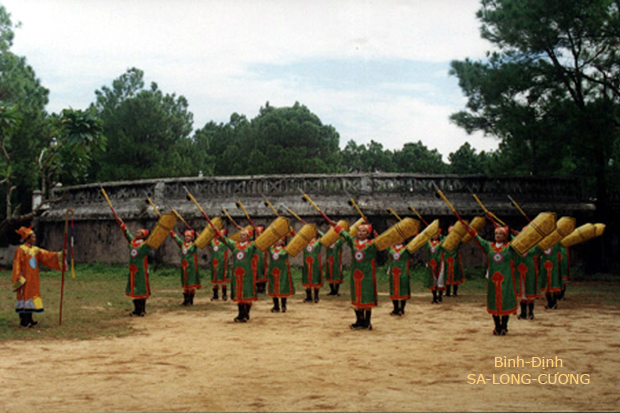
Polygonal Pavise still used in Warrior Dance of Eight Ranks
of Eight Mimes
at the old Imperial Capital of Huế in Việt-Nam.
(Photo taken in 2002)
Wooden Pavise « Lăng-Khiên » ( 稜 搴) from Thailand, |
Wooden Pavise « Lăng-Khiên » ( 稜 搴) from Thailand, |
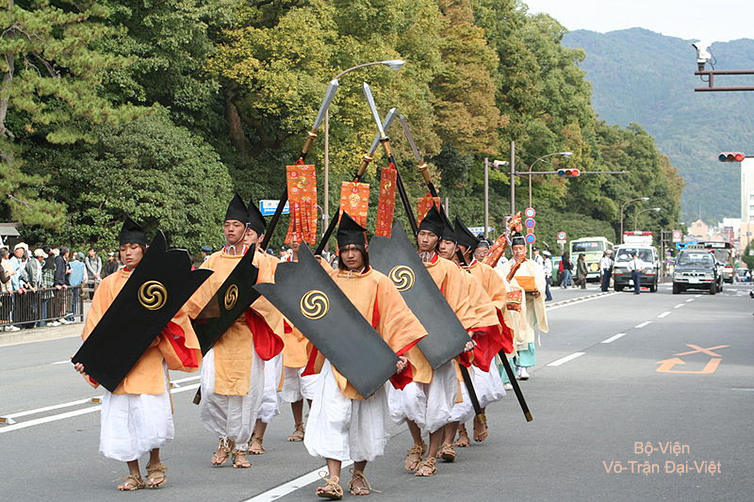
Stream of Polygonal Shaped Pavises « Lăng-Khiên » ( 稜 搴)
during the
Jidai Matsuri 時代祭 (Festivals of The Era )
in Japan on the year of 2009.
(Photo Credit : proboards.com)
Stream of Polygonal Shaped Pavise « Lăng-Khiên » ( 稜 搴) |
Stream of Polygonal Shaped Pavise « Lăng-Khiên » ( 稜 搴) |
Polygonal Shaped Pavise « Lăng-Khiên » ( 稜 搴) from Korea |
Polygonal Shaped Pavise « Lăng-Khiên » ( 稜 搴) from China |
α2 - The Genre of Polygonal Shaped Pavise « Lăng-Khiên » ( 稜 搴) supplied with Two Handles :
This Genre of Pygonal Pavise includes also Shields with various Forms and divides itself into Two Species :
α2γ - The Specie of Pavise supplied with Two Handles and an Average Size ;
α2δ - The Specie of Pavise supplied with Two Handles and a Size Bigger than the Average Size.
α2γ - The Specie of Pavise supplied with Two Handles and an Average Size :
Thiis Specie of Polygonal Shaped Pavise-Shield « Lăng-Khiên » ( 稜 搴) supplied with Two Handles and an Average Size had been perfected with many effort by the Ancients one part from Đại-Việt country and other part by those from Ai-Lao (Laos) country to make a specific Pavise-Shield Specie from each nation that any country does not own it..
Concerning the Đại-Việt, after an in-depth research throughout medieval battlefields tha Ancients had perfected a Specie of Polygonal Shaped Pavise Shield « Lăng-Khiên » ( 稜 搴) of covered with Bufalo leather reinforced by crimping of Steel, extremly dreadful. That is a specific Pavise from Đại-Việt, available for using in the Cavalry as well as in the Infantry, according to the tactical of Pitched Battles.
Distinguishingl Pavise « Lăng-Khiên » ( 稜 搴) from Đại-Việt |
The Scimitar using together with the distinguishing
- My Scimitar still exists in National Museum
|
As for Ai-Lao (Laos) country, the Ancients had also perfected a Specie of the distinguishing wooden Shield-Pavise « Lăng-Khiên » ( 稜 搴) , from the transformation of he Under-Category of Wooden-Rondache « Mộc-Bài » (木 牌), which doesn't yield in nothingi on the plan of dreadful efficiency.
Distinguishingl Pavise « Lăng-Khiên » ( 稜 搴) from Ai-Lao |
Distinguishingl Pavise « Lăng-Khiên » ( 稜 搴) from Ai-Lao |
α2δ - The Specie of Polygonal Shaped Pavise « Lăng-Khiên » ( 稜 搴) supplied with Two Handles and with a Size Bigger than the Average :
This Specie includes Pavises « Lăng-Khiên » ( 稜 搴) often specially reserved to On-Foot Soldiers in the tactical of Pitched Battles.

The Polygonal Pavois Lăng-Khiên, supplied with Two Handles, from MING Dynasty (明 朝 1368-1644) Period
still used in nowadays in the scenes of Pitched Battles throughout the movie.
(Photo Credit : Dragon's Armory)
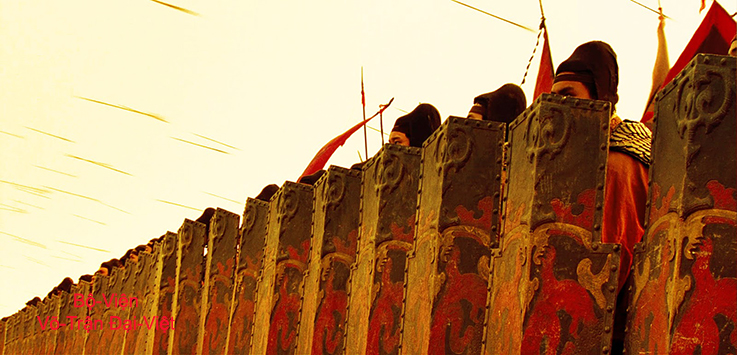
The Polygonal Pavois Lăng-Khiên supplied with Two Handles, from HAN Dynasty (唐 朝 618-907) Period
still used in nowadays in the scenes of Pitched Battles throughout the movie.
(Photo Credit : Dragon's Armory)
It has to be said that the Specie of Polygonal Shaped Pavise « Lăng-Khiên » ( 稜 搴) reserved to the use for only One Warrior and holding Two Handles quoted above includes very numerous Models whom the name varies according to the Morphology of the Pavois under consideration (« Wooden Tiger-Headed Pavois », « Swallow-Tailed Pavois », etc...) :
Polygonal Shaped Pavois « Lăng-Khiên » ( 稜 搴) |
Polygonal Shaped Pavois « Lăng-Khiên » ( 稜 搴) |
Unpainted Replica of Polygonal Shaped Pavois |
Polygonal Shaped Pavise « Lăng-Khiên » ( 稜 搴) from Korea reconstructed according to |
B4β - The Class of Polygonal Shaped Pavise « Lăng-Khiên » ( 稜 搴) reserved to the use for Several Warriors :
It's about the Polygonal shaped Pavise of great dimensions specially reserved for attacking and besieging or for defending ang protecting casttes and fortified towns.
That is precisely this Class of Polygonak Shaped Pavise of great dimensions which deserves really to be named by « Khiên » (搴) in every sense of the word « Khiên » (搴).
When we talk about the Class of Polygonal Shaped Pavois « Lăng-Khiên » ( 稜 搴) reserved to the use for Several Warriors, we can't fail to talk about the use of exceptional Pavois by Emperor Quang-Trung Nguyện-Huệ, of Tây-Sơn's Dynasty (1778-1802), in battles fighting triumphantly against Mandchus, on spring of the year 1789, throughout battles of Ngọc-Hồi, Đống-Đa and the reconquest of imperial Thăng-Long citadel .
This sovereign ordered to put together wooden boards by crossing the way of their fibres, so as to make sixty great Shields then to plait wet grass at the front of it. He could so, under the rain of Arrows lauching by Composite Bows and the heavy fire of Mandchu Muskets, to make his shock troops - of about ten combatants for each Pavois carried - to advance inexorably into the foot of the fortified towns walls in order to pull down the entry doors and to launch attack for wiping out the invaders.
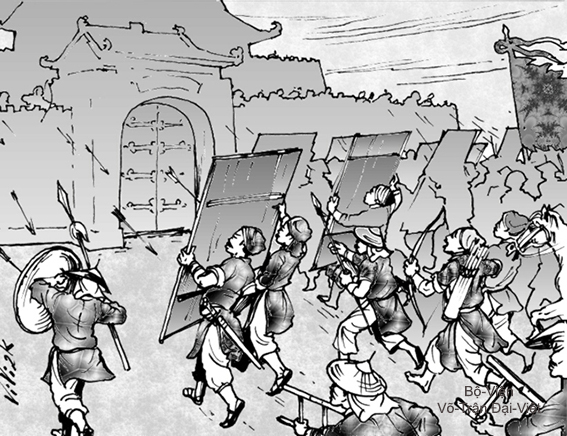
Great Shields used against Qing Manchu Armies by Tây-Sơn Combatants of rights
under the command of Emperor Quang-Trung (in Spring 1789).
(Photo Credit : nghiencuulichsu.com)
Pavise-Shield « Lăng-Khiên » ( 稜 搴) from Japan, |
Fix Bamboo « Palisade-Shield » ( 杆 盾) from Japon. |
(To be continued...)
Committee of Martial Arts Masters TRỊNH Quang Thắng. |
Copyright © 2004 - 2018 by ACFDV - All rights reserved.
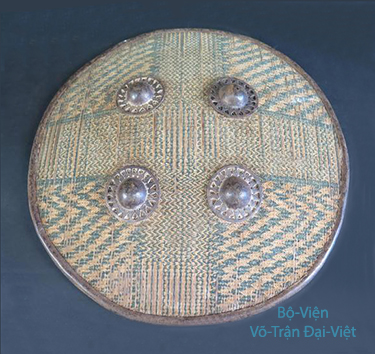
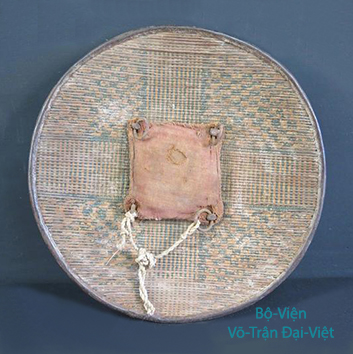
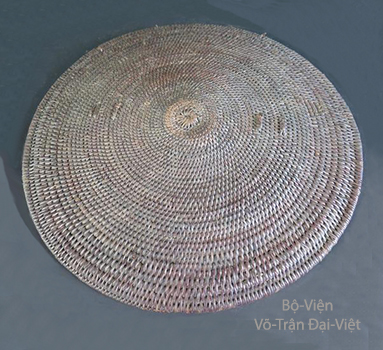
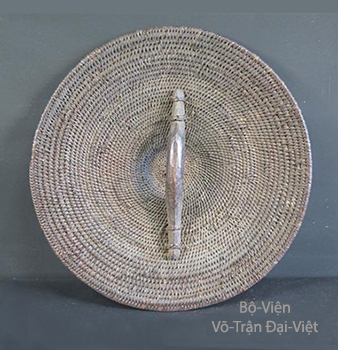
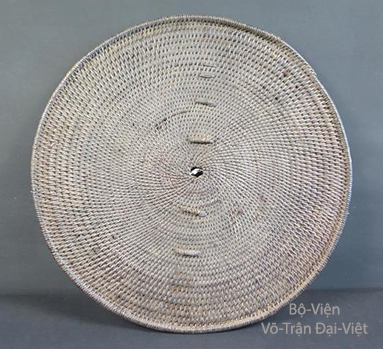
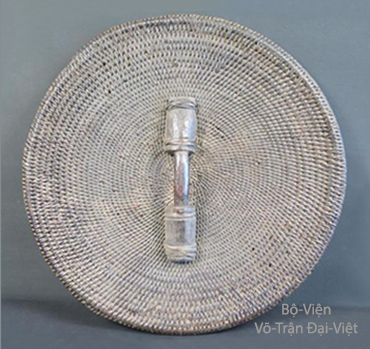
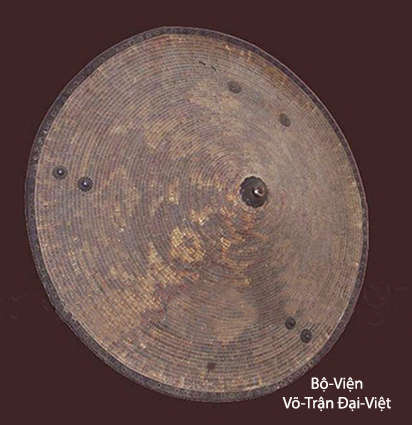
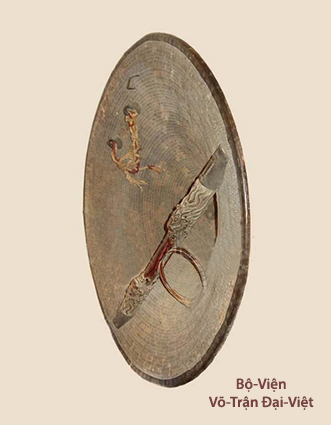
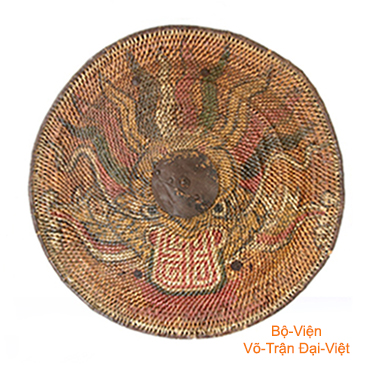
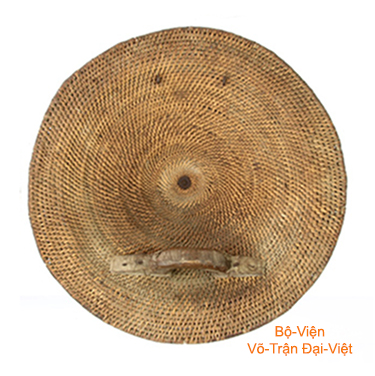
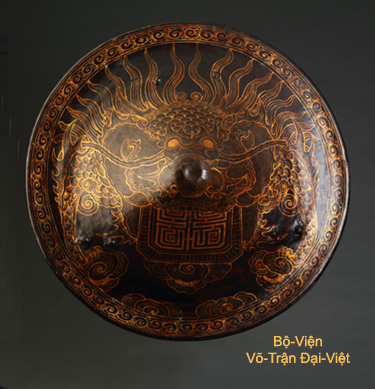

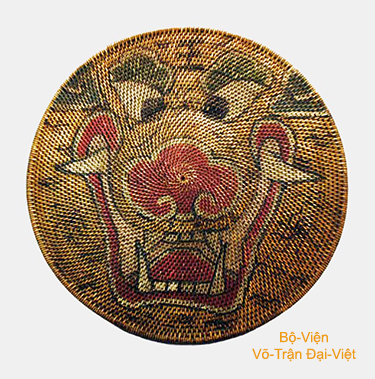
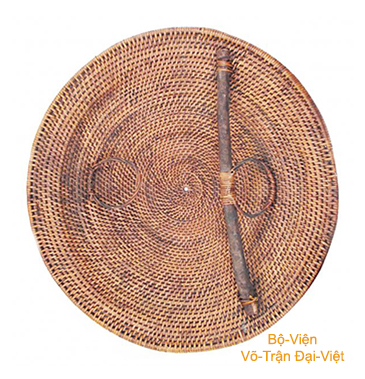
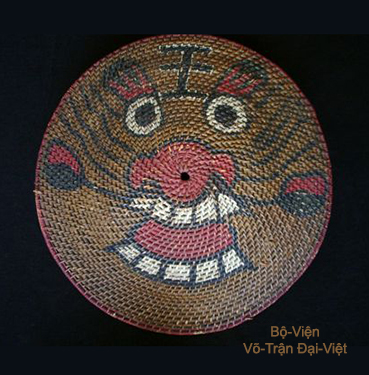
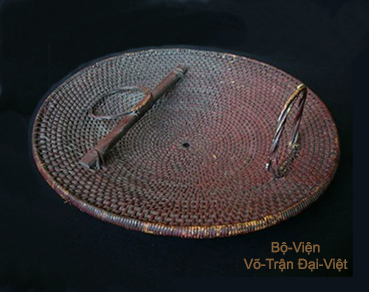
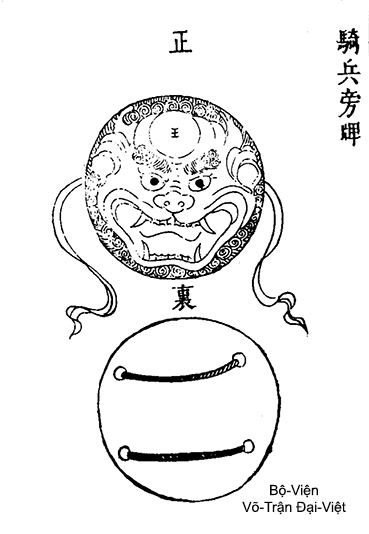
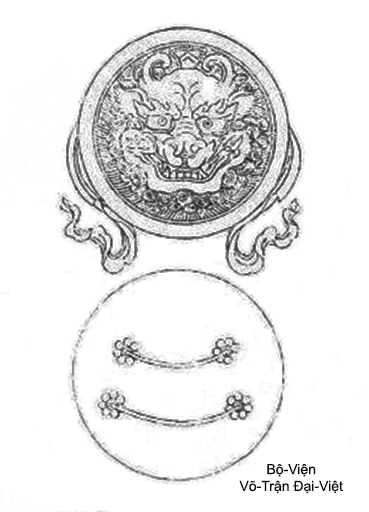
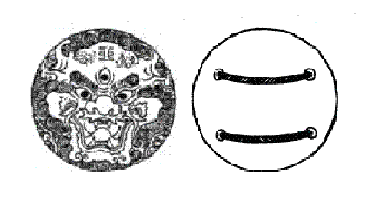
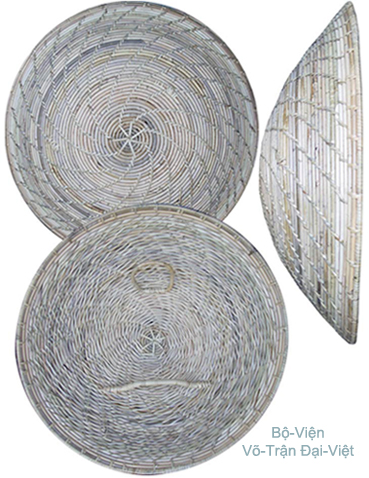
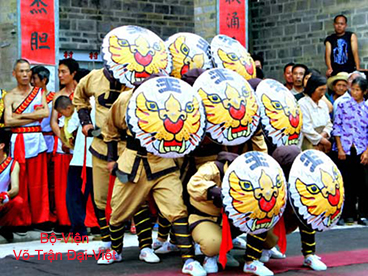
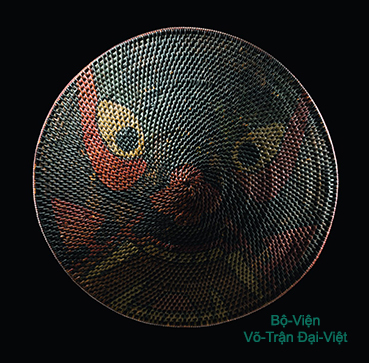
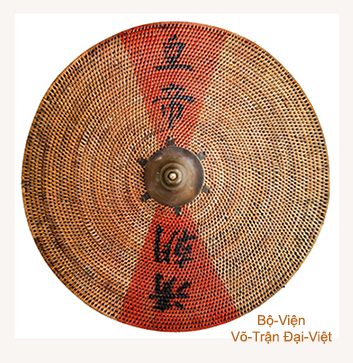
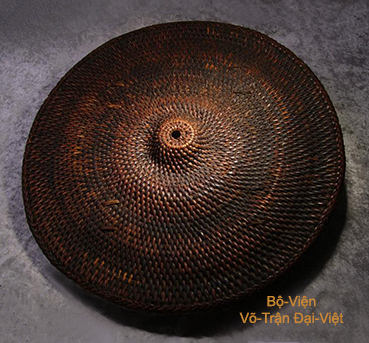
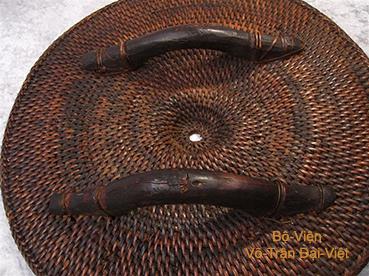
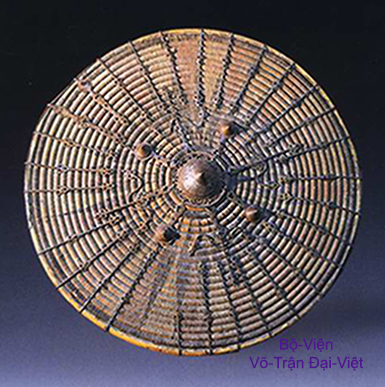
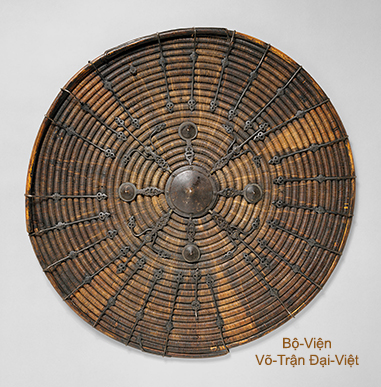
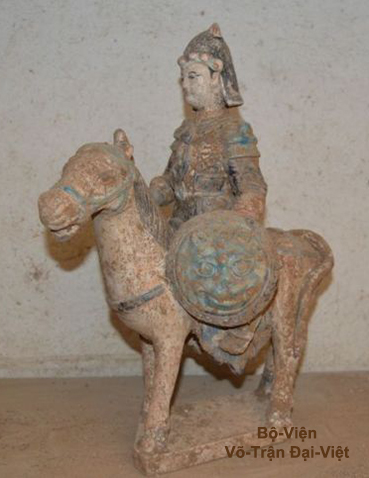

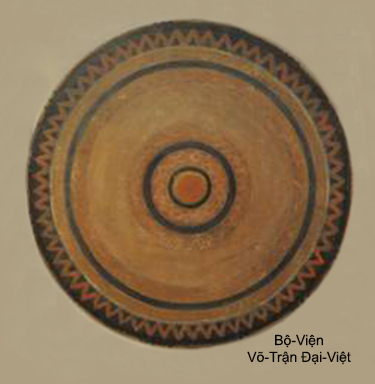

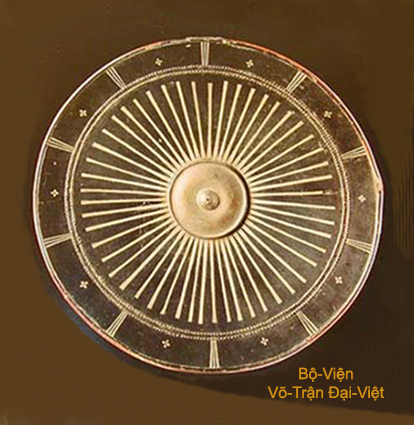
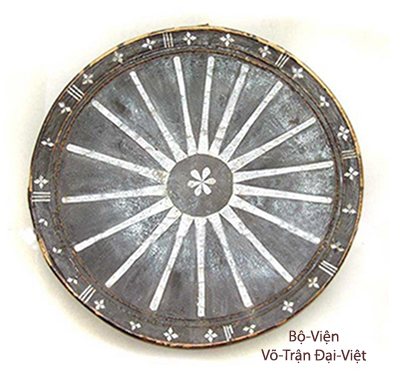
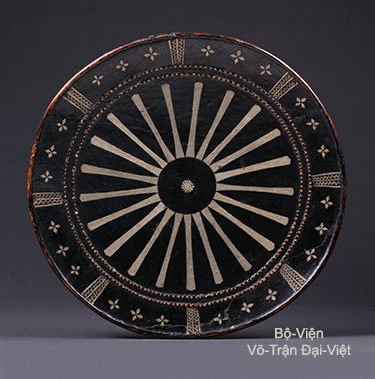
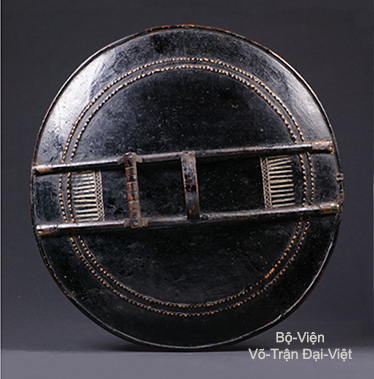
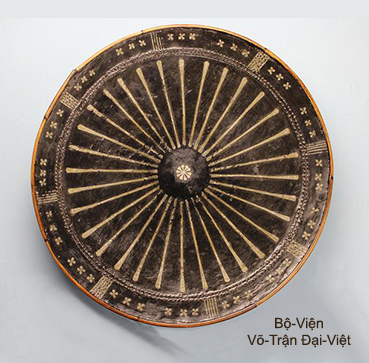
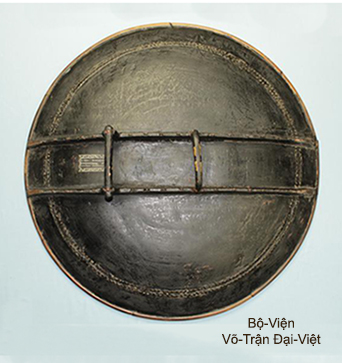
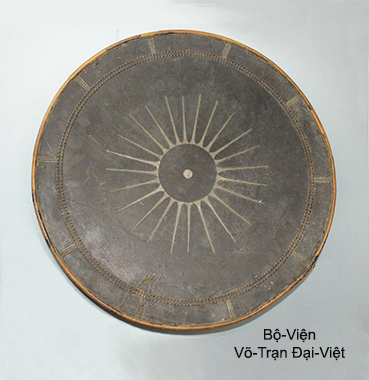
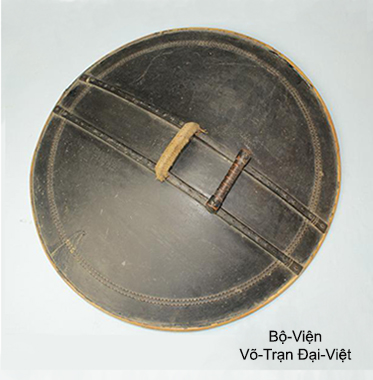
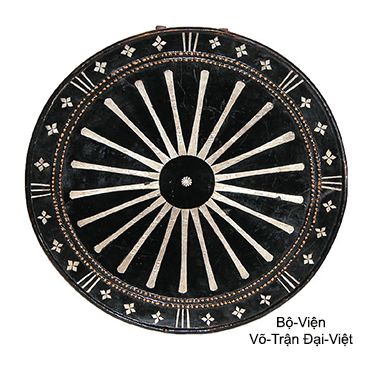
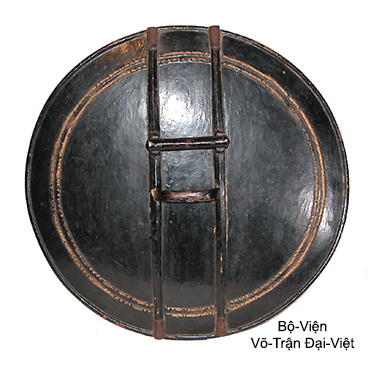

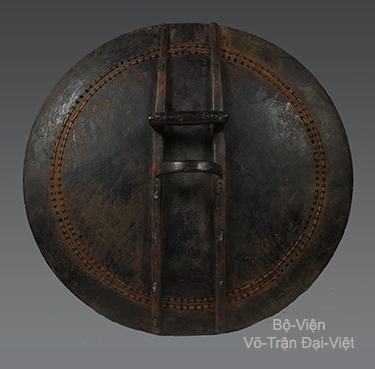
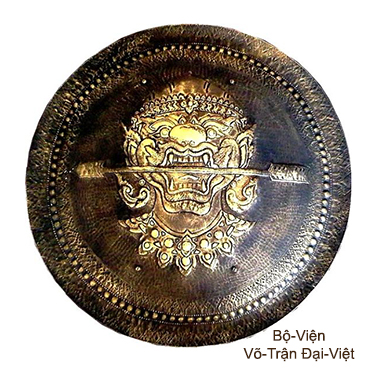
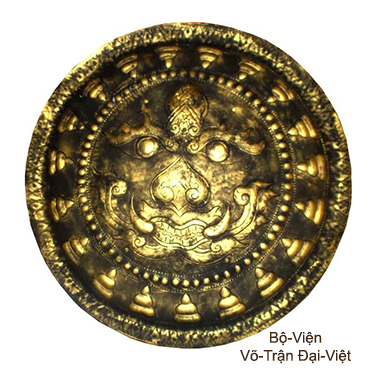
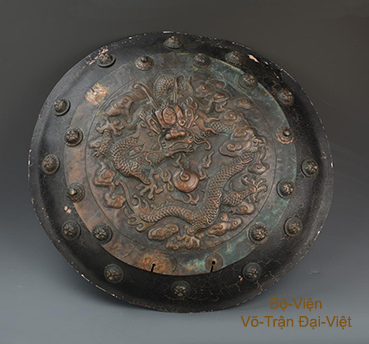
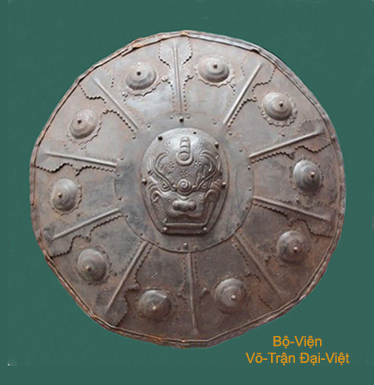
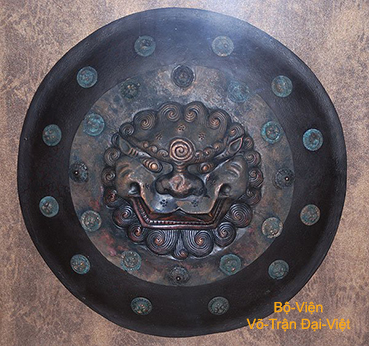
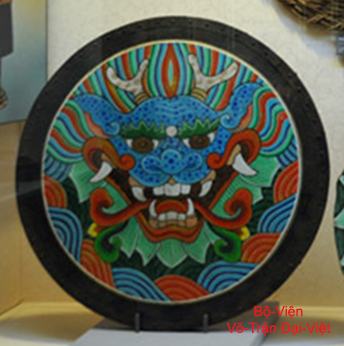
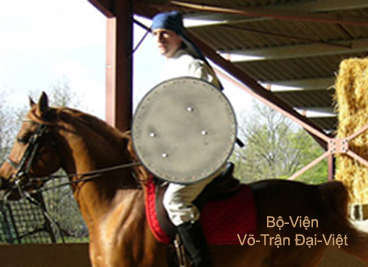
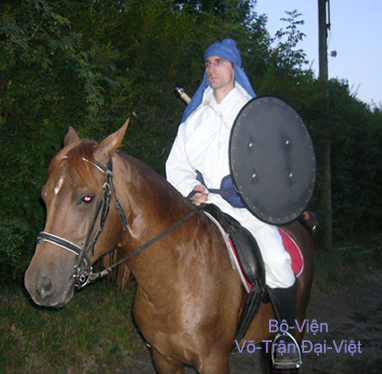
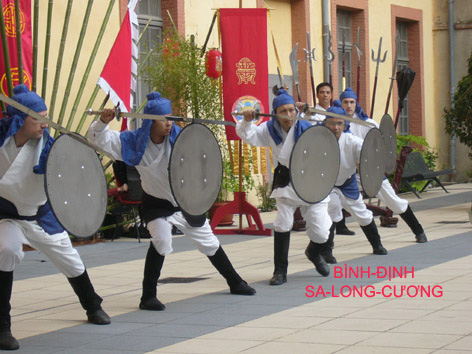
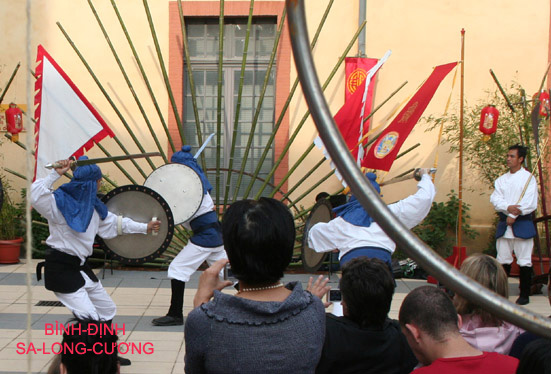
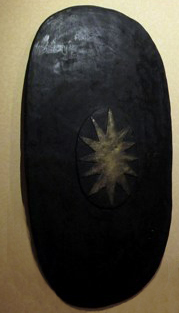
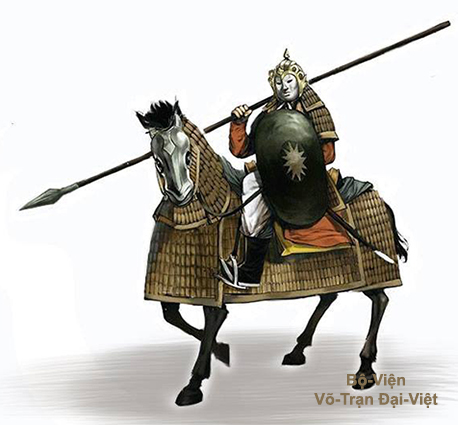
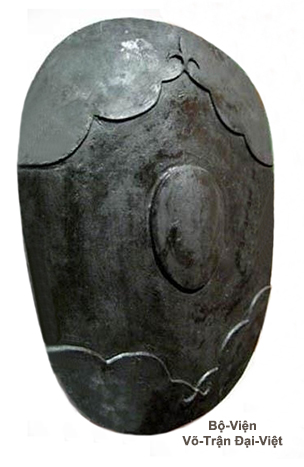
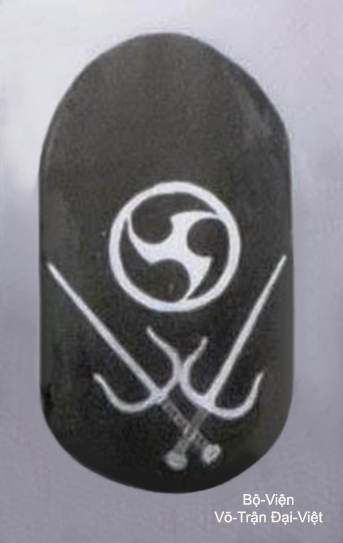
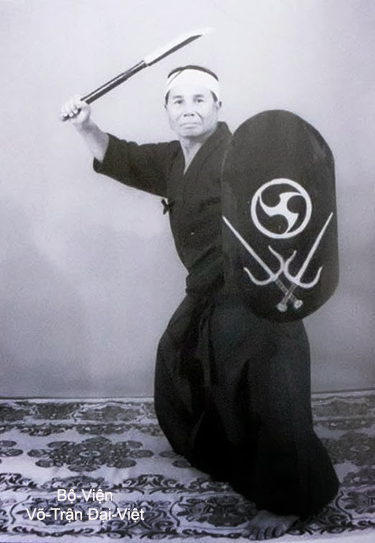
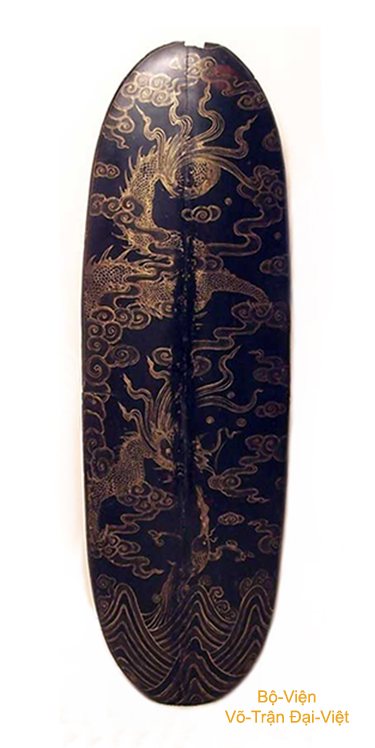


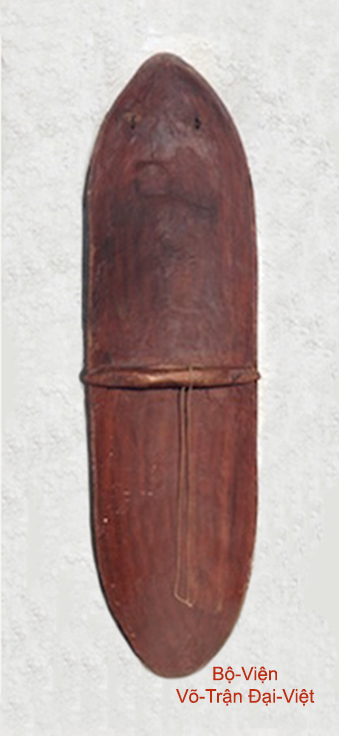
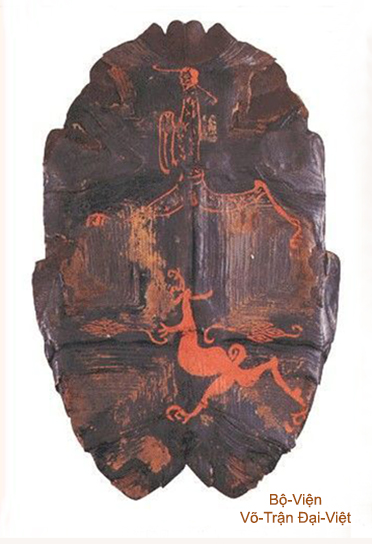
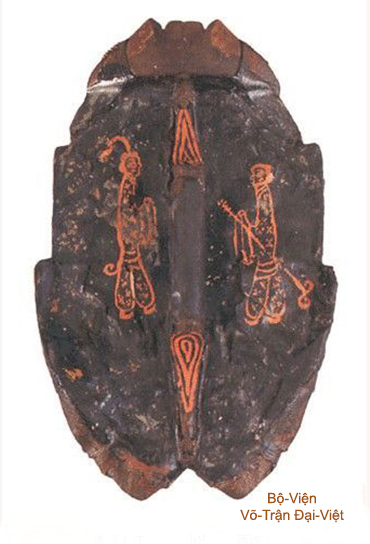
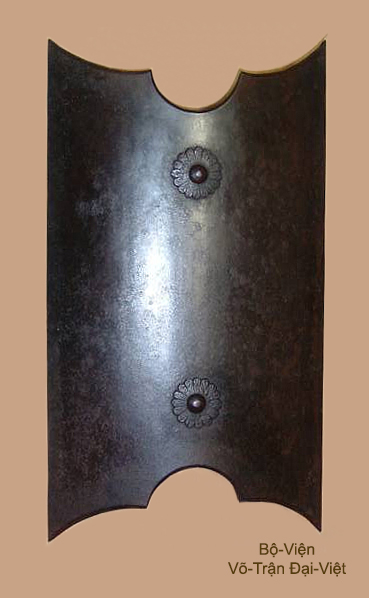
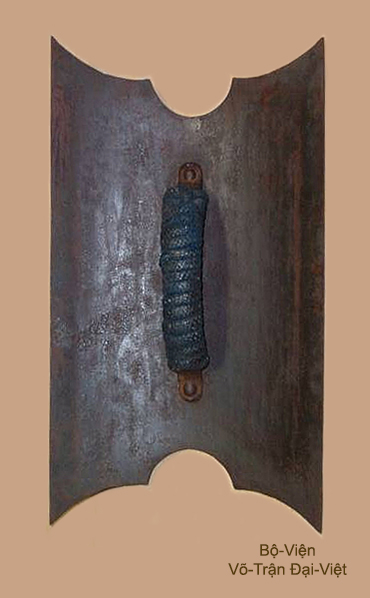
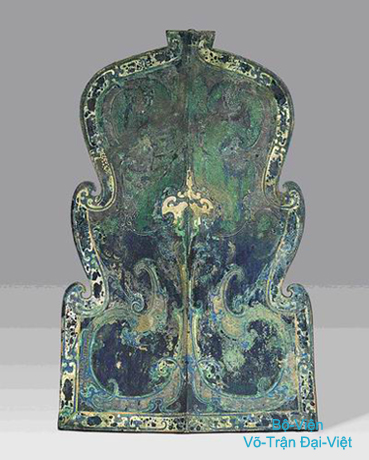
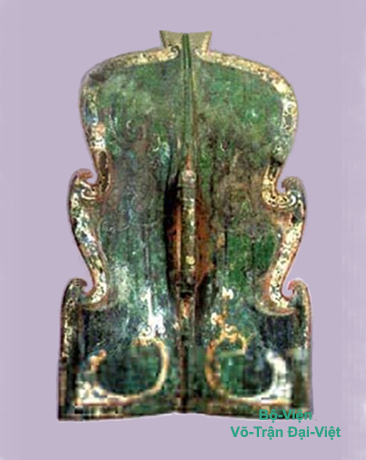
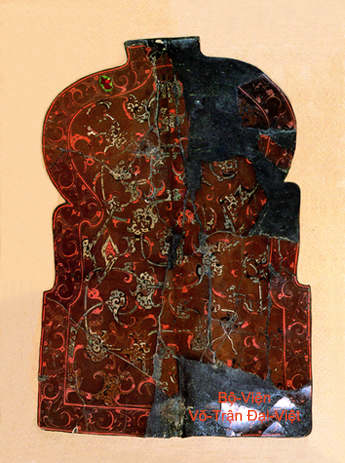
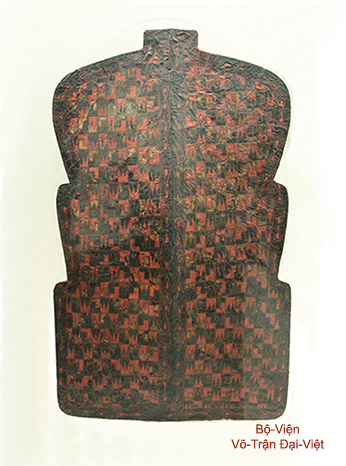
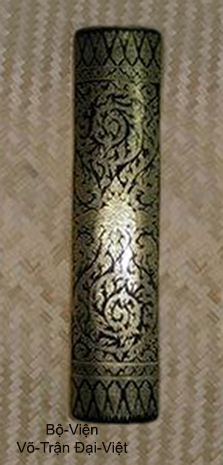
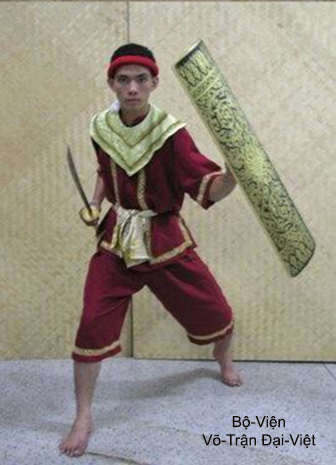
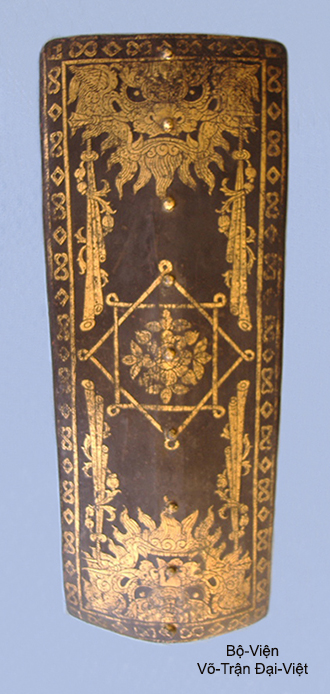
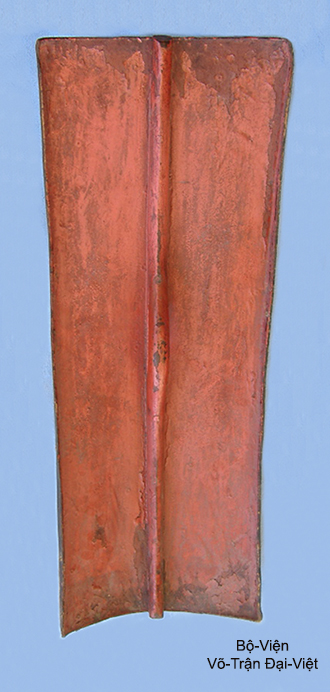
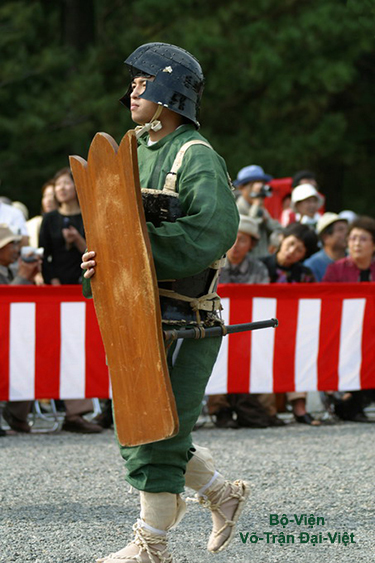
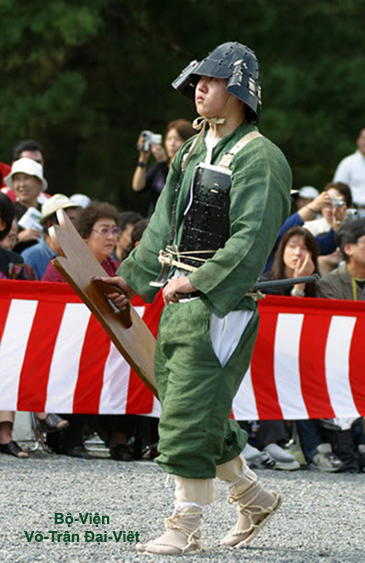
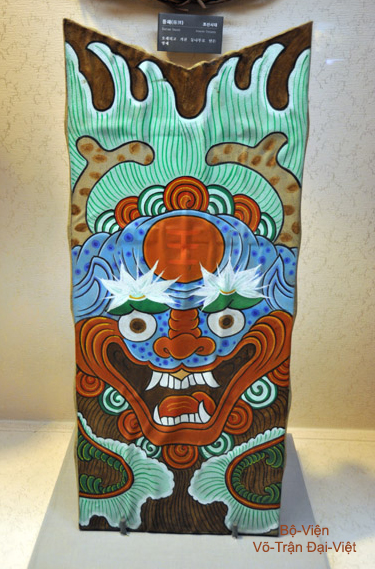
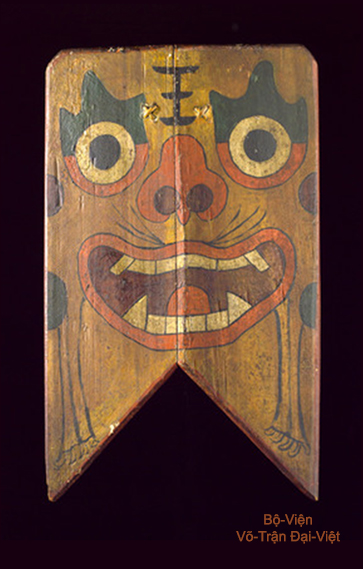
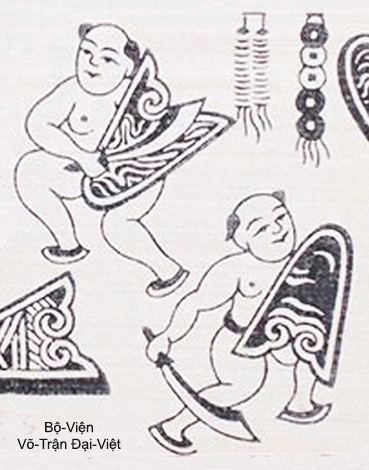
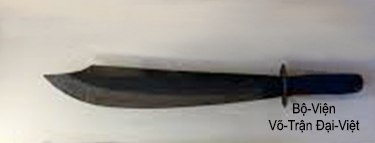
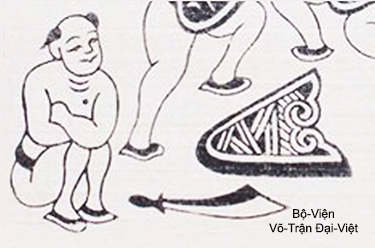
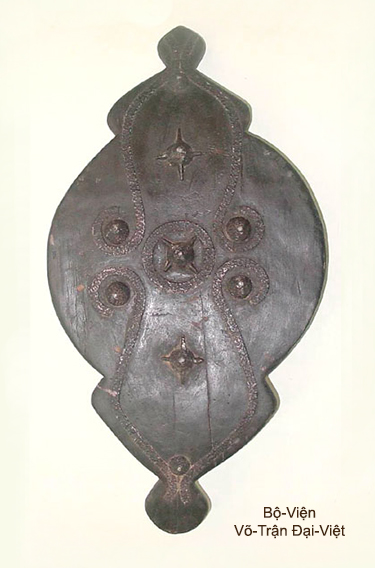
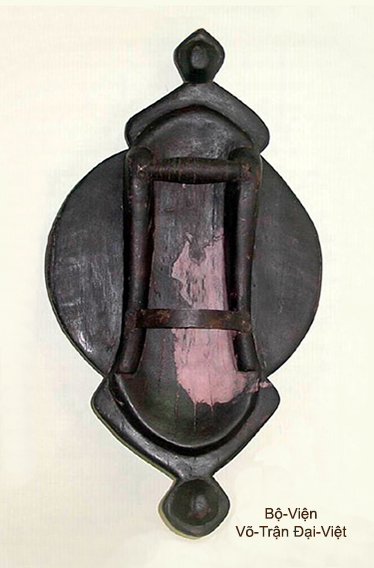
_RLC01..jpg)

